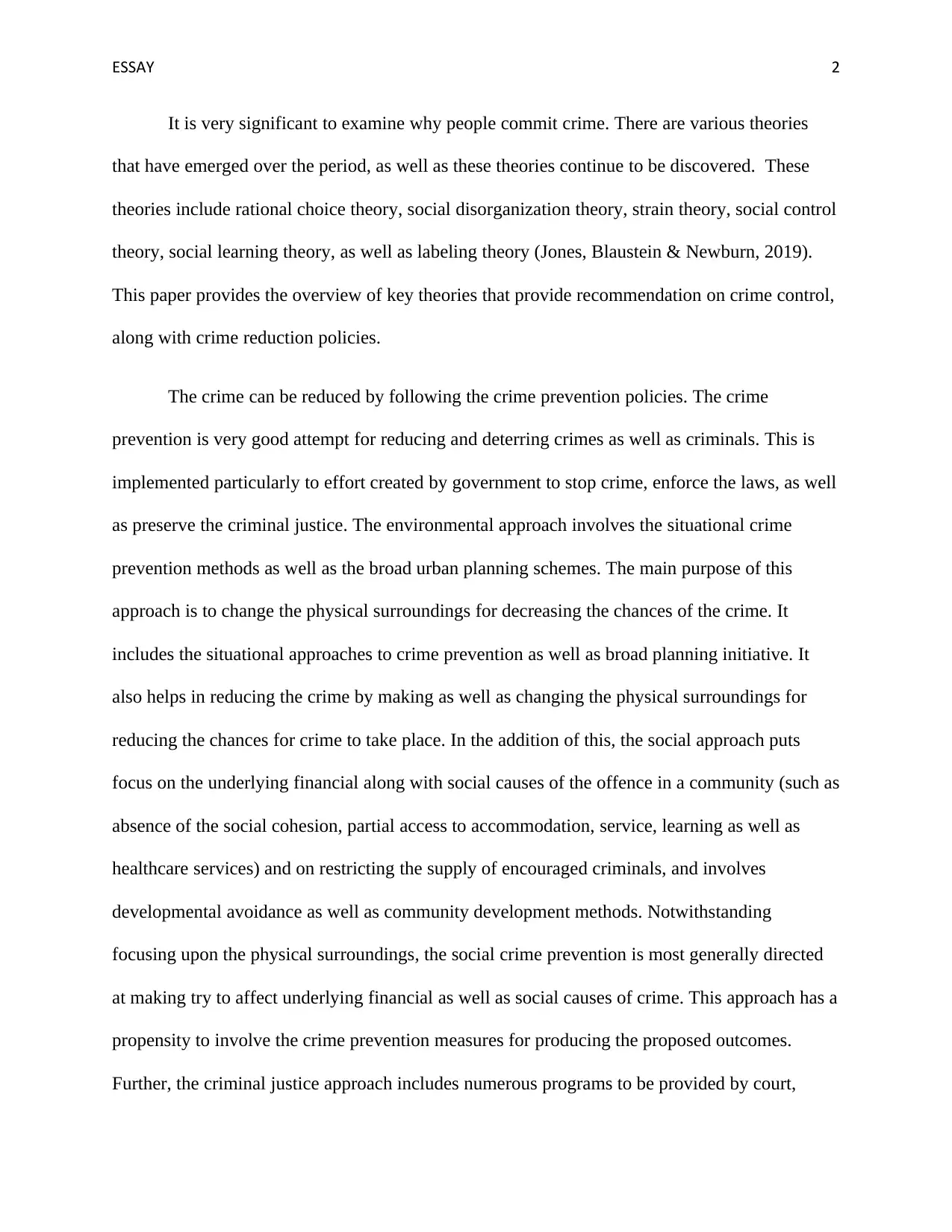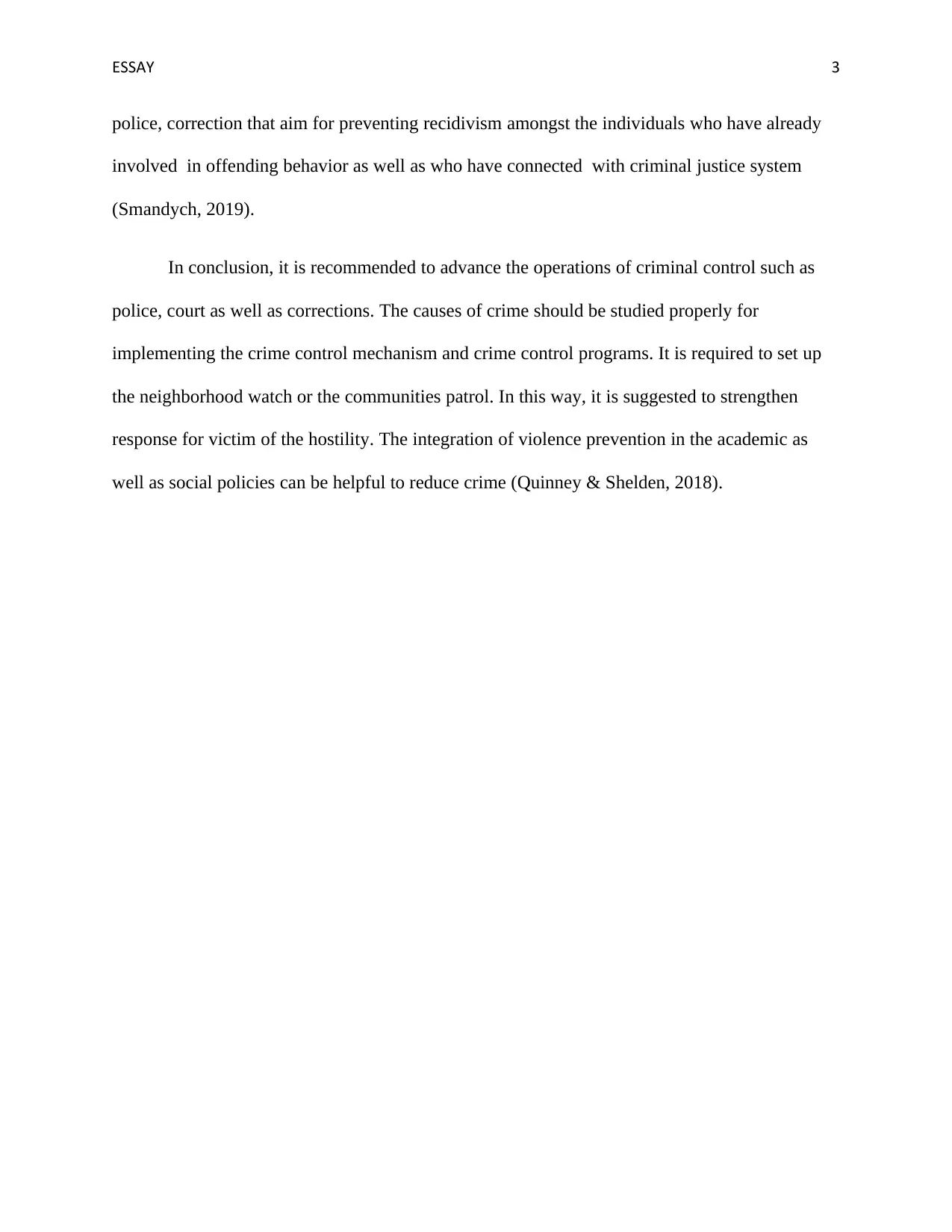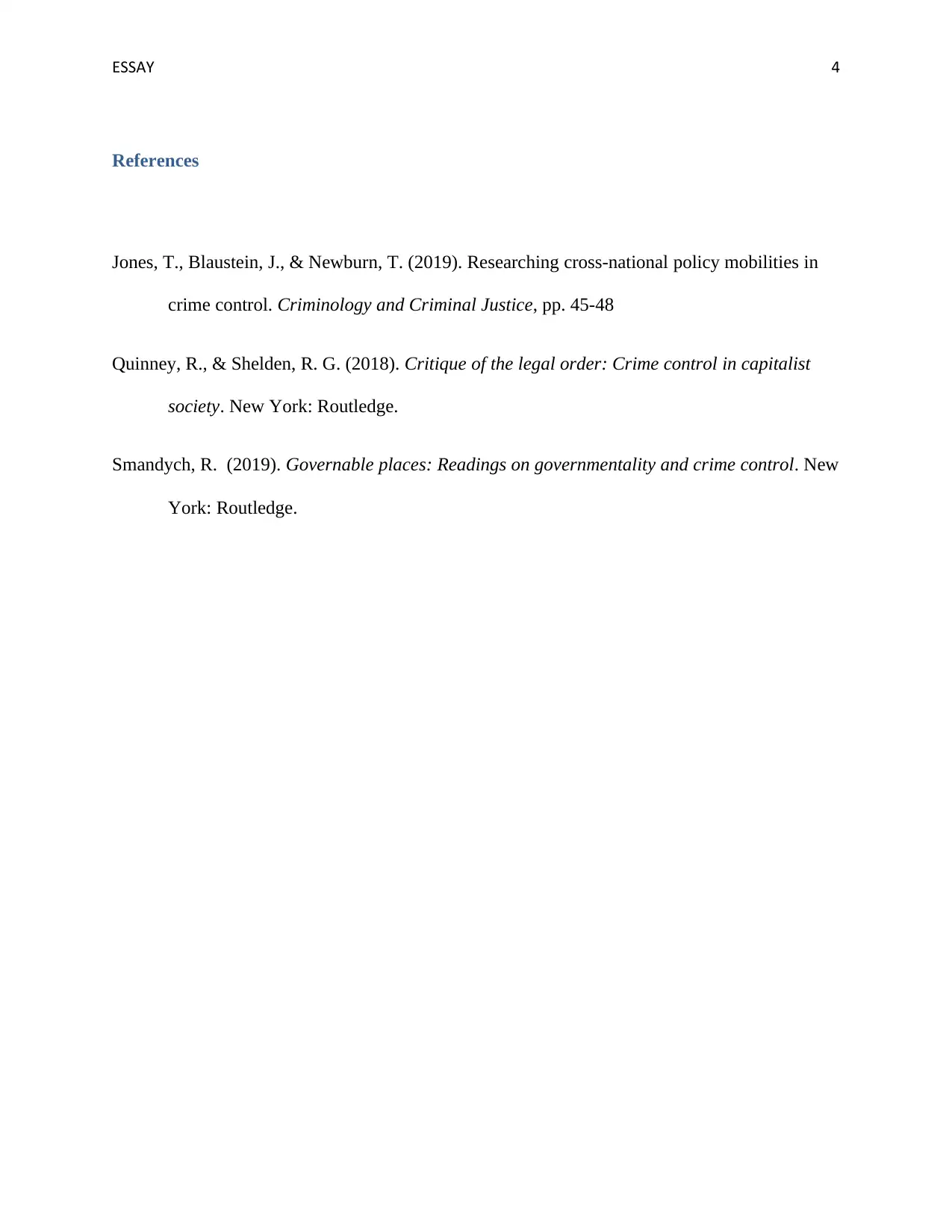An Analysis of Crime Control: Theories, Policies, and Strategies
VerifiedAdded on 2022/11/30
|4
|589
|447
Essay
AI Summary
This essay provides an overview of crime control, examining various theories such as rational choice and social disorganization, and their implications for crime prevention. It discusses the significance of crime control mechanisms and strategies, including environmental approaches, social approaches, and criminal justice interventions. The essay highlights the importance of situational crime prevention and social approaches, and the necessity of studying the causes of crime for the effective implementation of crime control mechanisms. It also suggests strengthening responses to victims of hostility, integrating violence prevention into academic and social policies, and establishing neighborhood watch programs to reduce crime and improve community safety. The essay emphasizes the need for continuous evaluation and adaptation of crime control measures to achieve desired outcomes.
1 out of 4










![[object Object]](/_next/static/media/star-bottom.7253800d.svg)